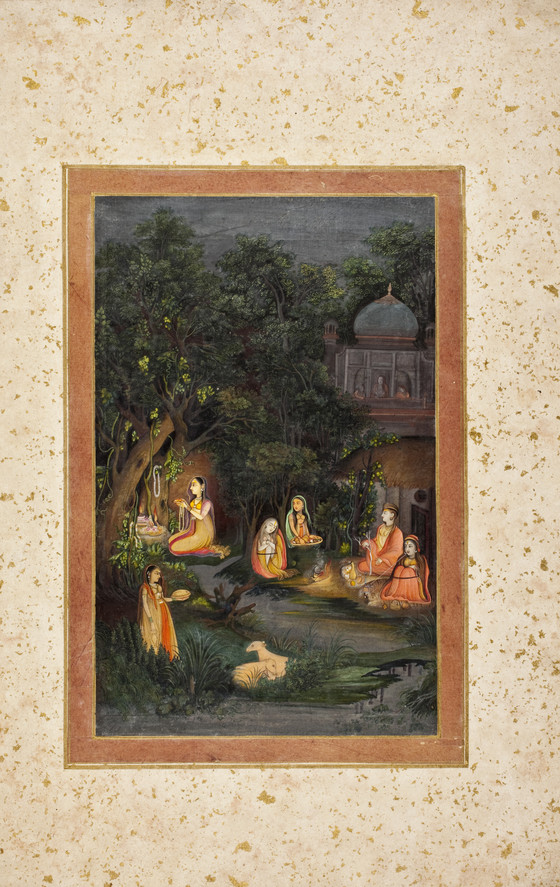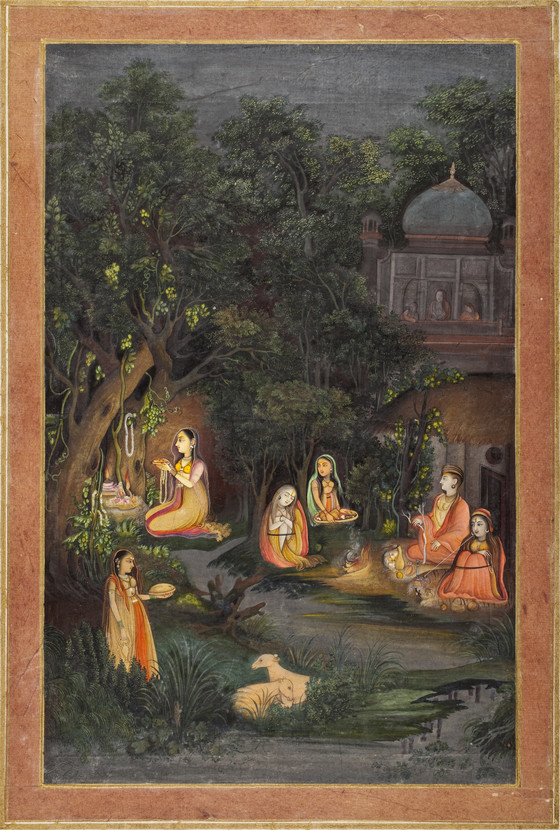A Princess Visiting a Forest Shrine at Night


Please log in to add this item to your gallery.
View comments
No comments have been posted yet.
Add a comment
Please log in to add comments.
Please log in to add tags.
* Nearly 20,000 images of artworks the museum believes to be in the public domain are available to download on this site.
Other images may be protected by copyright and other intellectual property rights.
By using any of these images you agree to LACMA's Terms of Use.
A Princess Visiting a Forest Shrine at Night
Drawings; watercolors
Opaque watercolor and gold on paper
Image: 10 1/2 x 6 11/16 in. (26.67 x 16.99 cm); Sheet: 18 11/16 x 12 5/16 in. (47.47 x 31.27 cm)
Purchased in memory of Emeritus Professor Roy C. Craven, Jr. with funds provided by the Southern Asian Art Council, Stephen Markel, Lorna Andreae Craven, Pierre Andreae, Jay and Kathleen Craven, Ruth and Bill Beesch, Mark Zebrowski and John Robert Alderman, R. and Dharini Charudattan, Austin B. Creel, Herbert H. Luke, Stephen Barry, Myra L. Engelhardt and Lawrence E. Malvern, Toby Falk, Claire and Earl Hale, Janice Leoshko, John and Thanomchit Listopad, Carlotta and Peter NeSmith, John F. Scott,Walter and Nesta Spink, Charles Gleaves, B.N. Goswamy, John L. Ward, Marjorie and Paul Burdick, Kenneth and Sarah Kerslake, Diane Maxwell, Arthur Funk, Barbara A. Purdy, Hiram and Avonell Williams, Mary Jeanette Householder, Irmgard Johnson, an anonymous donor, and the South and Southeast Asian Acquisition Fund (AC1997.30.1)
Not currently on public view


